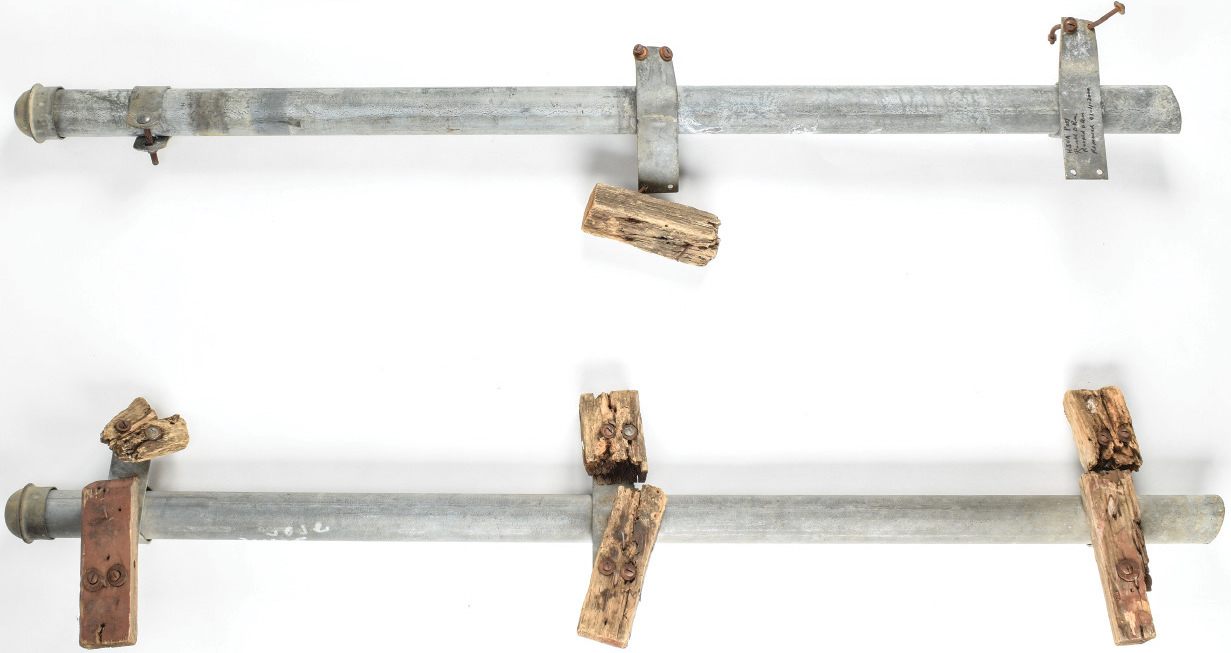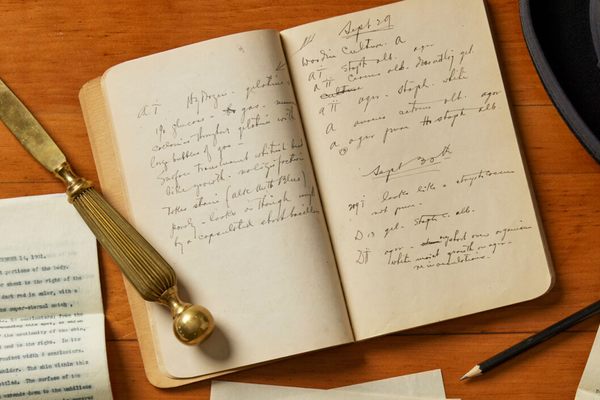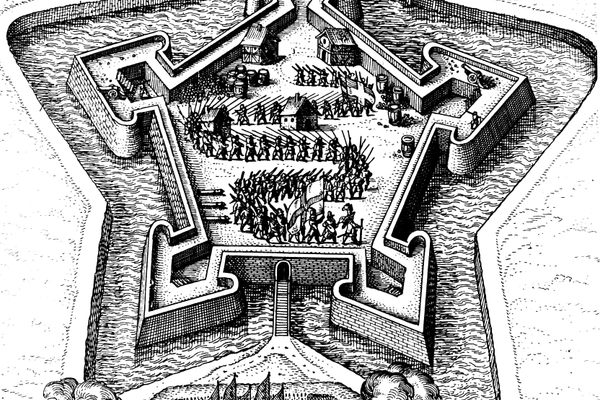For Sale: Fragments of the Grassy Knoll Kennedy Conspiracy Theory
These fence posts were witnesses to history.

Why would anyone pay upwards of $2,000 for two stodgy old metal fence posts? Well, conspiracy sells. As part of a vast auction of artifacts related to John F. Kennedy, RR Auction in Boston is offering fence posts from the infamous “Grassy Knoll,” said by conspiracy theorists to mark where a second shooter would have helped assassinate the 35th president in Dallas’s Dealey Plaza.
Each post has a distinct conspiratorial significance. One is named for the “Badge Man,” said to be visible just behind the fence in the center of Mary Moorman’s famous photograph, taken on a Polaroid camera within moments of the fatal shot ringing out. See those two, tiny white dots, floating just above the line splitting shady and sunlit parts of the fence? (It’s okay if you don’t.) If you have an eye for the sinister and secret, then you might see a gleaming badge and the flash of a rifle muzzle, but it’s not easy. The post itself isn’t visible, but there is a fence.

The “HSCA Fence Post,” meanwhile, takes its name from the House Select Committee on Assassinations’ 1979 report, which concluded that “scientific acoustical evidence established a high probability that two gunmen fired at President John f. Kennedy [sic],” and is a favorite document of the conspiracy-minded. One of those shots, it posited, was likely to have come from along the Grassy Knoll’s wooden fence, and this post appears to have come from somewhere in the range the report outlined. Sure, the committee’s acoustic evidence has been discredited, but why split hairs?
Kennedy assassination conspiracies have proven remarkably resilient, with FiveThirtyEight reporting last year that 61 percent of Americans believe that Lee Harvey Oswald did not act alone—with majorities in almost every demographic. Aniko Bodroghkozy, an historian at the University of Virginia who is writing a book about television coverage of the Kennedy assassination, calls herself academically “agnostic” on the various conspiracy theories, despite adding that they lack any form of hard evidence. She also polls her students on the subject, and suspects from that sample that younger people may be less inclined to buy in. The theories, she says, offer baby boomers a chance to make some sense of the turbulent times they lived in. Their elected officials and military brass, she explains, “were lying” about the Vietnam War, and Watergate, after all, “was a conspiracy.”
But there are conspiracies and conspiracy theories, and wisdom is being able to tell the difference. Believer or not, if you’re looking to collect a tangible piece of this American tragedy—and surely a volatile party conversation-starter—you can also bid on a window sash from the Texas School Book Depository building, from which Oswald fired the only confirmed shots of that morning.

















Follow us on Twitter to get the latest on the world's hidden wonders.
Like us on Facebook to get the latest on the world's hidden wonders.
Follow us on Twitter Like us on Facebook